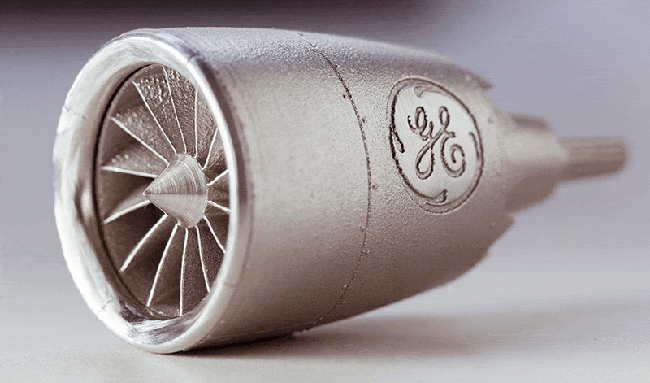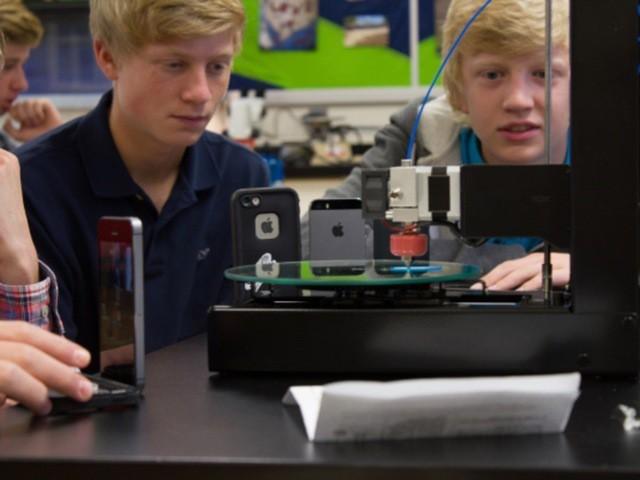 One of the big steps that GE has taken into the additive manufacturing industry was the creation of an entirely new branch of the company fully dedicated to the technology. GE Additive has been working to build a global network of additive manufacturing facilities – a network that already spans multiple countries and continents. Now the company is turning its attention to another vital area of the 3D printing world – education.
One of the big steps that GE has taken into the additive manufacturing industry was the creation of an entirely new branch of the company fully dedicated to the technology. GE Additive has been working to build a global network of additive manufacturing facilities – a network that already spans multiple countries and continents. Now the company is turning its attention to another vital area of the 3D printing world – education.
Over the next five years, GE will be investing $10 million in the GE Additive Education Program (AEP), a two-part educational initiative designed to foster and develop the skills of today’s students and tomorrow’s additive manufacturing experts. The 3D printing industry is a fast-growing one, as we’ve all seen, and building a workforce that can keep up with the rapidly developing technology in the future is a challenge that numerous companies and institutions have taken on.
The first part of any educational initiative, of course, is making sure that students have access to the necessary resources and equipment. That’s still been one of the major hurdles in 3D printing education – despite the increasing focus on schools, the dropping 3D printer costs, and the design of education-specific printers, the technology is still unaffordable for many schools. Thus, AEP’s mission is to provide 3D printers to schools at both the primary/secondary level and the collegiate level – and GE is willing to invest plenty of money to achieve its goal.
“We want to build an ecosystem for additive manufacturing across multiple industries,” says Mohammad Ehteshami, Vice President of GE Additive. “GE is committed to this technology for the long-term.”
GE will invest $2 million over the next two years in subsidizing polymer-based desktop 3D printers for primary and secondary schools around the world. Priority will be given to schools with strong STEM (science, technology, engineering, math) programs for students ages 8-18, or schools with a demonstrated interest and ability to build a STEM program. Meanwhile, the company will be investing $8 million over the next five years to subsidize up to 50 metal 3D printers for colleges and universities – again, priority will be given to schools that already have a foundation in additive manufacturing curriculum or research.
Applications for the first round of grants are being accepted now, with additional rounds continuing into the 2018-19 school year. The company will go through all applications it receives and identify, or “down select,” the schools that it believes to be the best fit for the program. Those schools will then be required to submit more detailed applications to determine the final recipients. Here is the timeline for 2017, according to GE:
Primary and secondary schools (ages 8-18):
February 28, 2017 – Introductory applications due
March 15, 2017 – Down-selected schools notified
April 7, 2017 – Detailed applications due
April 28, 2017 – Final selections notified
Post high school, universities, colleges, technical schools (ages 18+):
February 28, 2017 – Introductory applications due
March 30, 2017 – Down selected schools notified
April 30, 2017 – Proposals due
May 30, 2017 – Final selections notified
Primary and secondary schools that are chosen will receive desktop 3D printers from Polar 3D, as well as 3D printing curriculum developed by Dr. David Thornburg, Polar 3D’s recently-hired Director of Education. Selected colleges and universities will receive GE’s own metal additive manufacturing machines. Schools will be expected to contribute a minimal amount of funding or resources on their own for materials, training, or other needed equipment, and to provide feedback about the program and participate in best practice sessions. All schools, regardless of size or location, are welcome to apply.
“We are looking to support a diverse cross-section of schools, representing a variety of sizes, types and cultures from around the world,” GE states.
Primary and secondary schools interested in the program can apply here, while colleges and universities can access their application here. Discuss in the GE Additive Education forum at 3DPB.com.
Subscribe to Our Email Newsletter
Stay up-to-date on all the latest news from the 3D printing industry and receive information and offers from third party vendors.
Print Services
Upload your 3D Models and get them printed quickly and efficiently.
You May Also Like
Reinventing Reindustrialization: Why NAVWAR Project Manager Spencer Koroly Invented a Made-in-America 3D Printer
It has become virtually impossible to regularly follow additive manufacturing (AM) industry news and not stumble across the term “defense industrial base” (DIB), a concept encompassing all the many diverse...
Inside The Barnes Global Advisors’ Vision for a Stronger AM Ecosystem
As additive manufacturing (AM) continues to revolutionize the industrial landscape, Pittsburgh-based consultancy The Barnes Global Advisors (TBGA) is helping shape what that future looks like. As the largest independent AM...
Ruggedized: How USMC Innovation Officer Matt Pine Navigates 3D Printing in the Military
Disclaimer: Matt Pine’s views are not the views of the Department of Defense nor the U.S. Marine Corps Throughout this decade thus far, the military’s adoption of additive manufacturing (AM)...
U.S. Congress Calls Out 3D Printing in Proposal for Commercial Reserve Manufacturing Network
Last week, the U.S. House of Representatives’ Appropriations Committee moved the FY 2026 defense bill forward to the House floor. Included in the legislation is a $131 million proposal for...




































